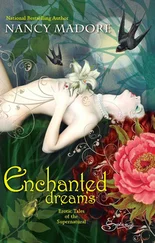Maurice Grosse is hurt by any suggestions that the case was not genuine. He committed a great deal of his time and energy to investigating it and fifteen years later, with a number of other investigations under his belt, still feels that it was ‘the case of the century’.
‘It is very easy to cry “fakery” when we don’t have any real answers,’ he said. ‘We have theories about poltergeists but we don’t understand them. Fraud is one of the handiest explanations to latch on to. It stops us having to delve any further. I know the problem other researchers had – they didn’t see what was happening at Enfield. It is one thing hearing about phenomena, quite another to witness them. It was my first investigation and I saw more startling evidence there than most researchers see in a lifetime of different cases.’
Maurice Grosse has tape recordings of various aspects of the case, including the gruff voice the girls could produce. Photographs were also taken, some of which purport to show the girls being thrown out of bed, their bedding whipped off them and levitations. Unfortunately, no video film was obtained of the phenomena. There was a persistent tendency for electrical equipment, mains or battery, to malfunction at the Enfield house.
Ghosts and Hauntings
When Andrew Green and his wife moved into a new house in Bramley, Surrey, the garden was what attracted them. It was an acre in size, and relatively undeveloped, with a wooded area and a trout stream running through it. A very keen gardener, Andrew spent most of his leisure time working on it. It preoccupied him – he even daydreamed about it while commuting into London to his publishing job. His favourite spot was a large rockery in one corner, which he built entirely alone, lugging heavy rocks into place and spending hours browsing through catalogues and garden centres to decide which plants to put in.
Unfortunately, Andrew and his wife divorced and had to move. They sold the house to a couple with two young children. During the sale, Andrew became friendly with the couple and invited them to call on him if ever they were passing through Robertsbridge in Sussex, where he now lives. Eighteen months later, they rang to say they would be in the area and would pop in to see him, bringing their children, who had never met Andrew, with them.
‘As they got out of the car, their twelve-year-old daughter went very pale and fainted. When we got her up and into the house, she told her father that I was the man she had seen on the rockery. Apparently, she had been telling her parents for some time that she kept seeing a man on the rockery in the garden. They had not believed her, although her description had sounded quite like me. After meeting me in the flesh, she never saw me again in the garden.’
Andrew Green admits that it was an enormous wrench for him to leave the garden at Bramley and that he felt especially attached to the rockery because it was entirely his own work. At his new home, he woke up several times imagining he was back there.
‘Obviously, the attachment wore off and I suspect that as it did the girl no longer saw me.’
Andrew Green appears to have been able to leave some sort of imprint of himself on the surroundings that were so important to him. It seems more likely that he created the apparition, than that it was created by the girl who had never clapped eyes on him before. Yet many experts say that all apparitions are hallucinations. They get round the problem of different people at different times seeing the same ghost by suggesting that the hallucination is transferred from one person to another by telepathy. In some way, the emotions of the first person to see the ghost transmit themselves to others at the scene and they then share the hallucination.
A classic group hallucination was reported by F.W.H. Myers in 1903 and happened in 1887. Canon Bourne and his two daughters went out hunting and at midday the two girls decided to return home with the coachman while their father carried on. After stopping to speak to somebody, they turned and saw the Canon waving his hat to them from the opposite side of a small dip and signalling to them to follow him. One of the sisters, Louisa Bourne, provided the following statement, which was also signed as correct by her sister:
‘My sister, the coachman and I all recognized my father and also the horse. The horse looked so dirty and shaken that the coachman remarked he thought there had been a nasty accident. As my father waved his hat I clearly saw the Lincoln and Bennet mark inside, although from the distance we were apart it ought to have been utterly impossible for me to have seen it. At the time I mentioned seeing the mark, though the strangeness of seeing it did not strike me until afterwards.
‘Fearing an accident, we hurried down the hill. From the nature of the ground we had to lose sight of my father, but it took us very few seconds to reach the place where we had seen him. When we got there, there was no sign of him anywhere, nor could we see anyone in sight at all. We rode about for some time looking for him, but could not see or hear anything of him. We all reached home within a quarter of an hour of each other. My father then told us that he had never been in the field in which we saw him the whole of that day. He had never waved to us and had met with no accident. My father was riding the only white horse that was out that day.’
The fact that the girl could clearly see the manufacturer’s mark in her father’s hat at a distance from which it should not have been visible supports the hallucination theory, but there is still the problem of why all three of them saw exactly the same thing at the same moment, unless the apparition came not from their minds but from the mind of the Canon.
The hallucination theory may even hold good for the straightforward apparitions that manifest in the same place, doing the same thing, at different times (classic grey ladies and headless riders reported across the centuries). Fred, who saw the child-like apparition in the Cardiff poltergeist case, actually suggested to Dr Fontana that it might be his own hallucination of himself as a child.
Trying to make all cases conform to the theory is at best a tortuous exercise, and one that is rejected by researchers like Dr Alan Gauld who feels it falls short of explaining the physical phenomena that sometimes attend hauntings: noises, the breaking of crockery, opening and closing doors with visible turning of handles or lifting of latches.
If the hallucination theory is accepted, it’s interesting to note that the human mind can collectively conjure up the personality of a ghost.
Tony Cornell and some friends were called in to investigate a haunted pub, the Ferryboat Inn at Holywell, near Cambridge, in the early 1950s. Cornell had heard that every St. Patrick’s Day a ghost appeared in the bar and pointed at one of the flagstones, which moved. He and his friends went there on the right day, stationed themselves above the flagstone with a ouija board, and conducted a seance. They soon had a communicator, a girl who told them her name was Juliet Tewsley, that she was a Norman, and that she was hanged for her affair with a married man, Thomas Zole, in 1054.
‘There were five of us round the ouija board, possibly talking to our own unconscious minds. But it gave the landlord of the pub an idea, and he asked us to go again the following year – only for us to find that a lot of media people had also been invited. Since then, the story has been added to and added to,’ said Tony Cornell.
‘There is no evidence that this girl existed. The name Juliet didn’t come into the English language until the sixteenth century, the Normans did not invade until 1066. One wonders if this is how all ghost stories start.’
In a more controlled way, the Toronto Society for Psychical Research created their own ghost in 1974. Eight of them, under the supervision of British mathematician Dr A.R.G. Owen, assembled around a table with their hands clearly visible on top and made ‘contact’ with a ghost they had invented themselves: a Royalist knight at the time of the English civil war, called Philip. Philip would answer questions by rapping on the table, and would make the table tilt and eventually levitate off the ground. But the framework of the fictional Philip’s life had all been worked out beforehand by the group: he lived in a large house called Diddington Manor, he had a wife called Dorothea and had been passionately in love with a gypsy girl who was burned as a witch. Philip died by committing suicide, out of guilt for not having saved the girl. The ‘ghost’ of Philip accepted the characteristics assigned to him and even filled in more background details about himself.
Читать дальше












